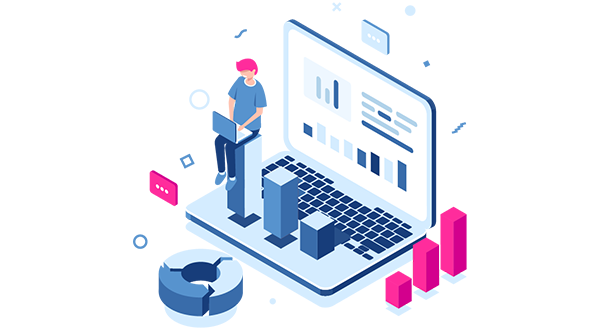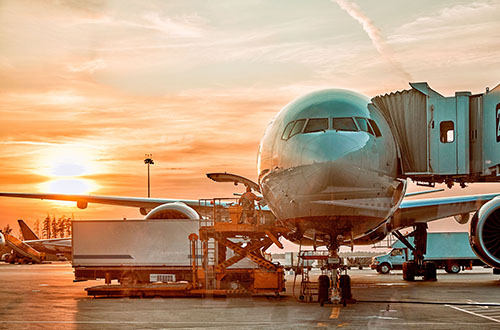

mLogica Thought Leaders: Mainframes are at a Crossroads: Take the Automated Modernization Route

Satya Bhandary, mLogica Group V.P. of Global Sales and Alliances
First popularized in the 1960s, mainframe systems have survived the test of time, acting as the critical support of businesses worldwide for decades. The “big iron” has sustained a variety of businesses from healthcare to finance with their proven resilience.
However, a host of old and new technological obstacles are forcing a sea change in how even the largest and most venerable companies are looking at their mainframes. Their rigid, monolithic structure, once accepted as a non-negotiable feature of enterprise computing, has given way to new business imperatives like the need for agility, scalability and innovation on demand. System adaptations and upgrades that once took weeks or months now have to happen much faster for companies to remain competitive.
Another feature of mainframes that’s always been seen as unchangeable is costly data centers. Once viewed as obligatory for the ultra-high volume computing requirements of large corporations, with the advent of the cloud the millions spent annually on physical infrastructure now seem like an unnecessary drain on the bottom line.
Mainframe Modernization Is the Only Path Forward
The world has changed drastically in just the past few years. COVID-19 redefined the norms of business, and technology integration has changed from “nice-to-have” to a necessity. The irreversible trends of remote workforces, digital collaboration and online commerce have forced companies to embrace modernization as the only route to achieve adaptability and scalability. What’s more, mainframe-based businesses must elevate their technology stack to leverage critical data analytics, artificial intelligence and cloud computing.
These challenges become even more critical in light of the fact that the pool of qualified support resources for mainframe-based technologies is dwindling every year. Legacy modernization offers businesses a chance to reinvent their existing systems to gain modern technologies while saving on licensing, infrastructure and staffing costs.
The Mainframe Modernization Conundrum
When considering mainframe modernization, organizations also have to decide whether to use a traditional manual approach or to opt for an automated solution. Manual modernization is a monumental process that entails laborious rewriting of millions of lines of code, while also attempting to enhance the functionalities of applications and the performance of supporting systems.
However, the inherent complexities of legacy mainframe technologies increase the incidence of human error during manual conversion. Multiple studies have shown that manual migrations are six times more likely to fail due to coding errors and timeline and cost overruns. So how can such an intensive, organization-wide business transition be accomplished seamlessly and cost-effectively?
The answer is taking what used to be a herculean manual undertaking and automating it. Automation provides an efficient, cost-effective route for businesses to modernize their legacy mainframe systems, one that’s also more dependable and accurate enterprise-wide.
With mLogica’s automated LIBER*M Mainframe Modernization Suite, individual modules assess the Customer’s existing application portfolio, including bedrock technologies and critical supporting programs that require specialized expertise. This in-depth analysis can determine all up- and downstream dependencies, allowing the modernization team to create a precise end-to-end project roadmap based on this detailed picture of the existing tech stack.
Using an automated solution, enterprises can substantially cut the time and work required for migration of business-critical applications, not only speeding up the modernization process but minimizing human errors and risks to the business.
Key Value Drivers of Automation
Efficiency and Agility
Enterprise-level applications and workloads are critical to all daily business functions and therefore require an efficient, seamless migration process. Automated modernization technologies enable businesses to migrate to the cloud faster to meet business and customer demands with virtually no disruption.
Risk Mitigation
The fundamental risk of manual modernization stems from the inevitability of human errors. The larger the enterprise, the greater the organization-wide impact of each error. Automated migration that leverages programmed algorithms and best practices reduces these risks, making it a more stable, dependable solution.
Faster ROI and Time to Value
Since manual modernization is a monumental, slow and error-prone process, it requires an enormous expenditure of financial and staff resources. By contrast, automated modernization ensures higher efficiency of resource use, ensuring businesses get a speedier return on investment and, with dramatically shorter timelines to deployment, significantly faster time to value.
Preserving Business Logic
Automated modernization technologies are programmed to keep legacy systems' fundamental business logic intact. By doing so, business continuity is maintained and essential functions and procedures are migrated fully intact to the target platform.
On-Demand Access to Advanced Technologies
Post-modernization, organizations can easily connect mainframe programs with cutting-edge technologies like cloud computing, APIs and microservices. This allows them to leverage the best features from both traditional and modern architectures.
The Modernization Process: Key Strategies
Although automated modernization has many benefits, it's important to approach the transition strategically. A proven methodology can ensure faster project completion by including:
Comprehensive Assessment
Start by performing a thorough analysis of your mainframe systems, one that discovers dependencies, essential features and potential risks that could occur in the course of modernization. mLogica’s LIBER*DAHLIA, a module of our LIBER*M Mainframe Modernization Suite, automates this assessment process to root out often-overlooked critical underlying technologies that, if not expertly migrated, can lead to costly delays and even project failure.
Choosing the Correct Tools
An assessment, such as the one mentioned above, allows you to select automated modernization solutions that fit the precise conversion requirements for all databases, programs, languages and dependencies in your existing technology stack.
For example, while COBOL, CICS, VSAM and Db2 are often the largest components of mainframe systems, addressing them without assessing and planning for the exotic technologies around these applications can lead to disaster. Most failed projects have such exotic languages in common, including Assembler, Easytrieve, Telon and PL/1. This is an unfortunately common pitfall called the Last Mile Challenge.
Testing and Performance Tuning
Throughout the modernization process, you need to prioritize comprehensive testing protocols. Performance testing, integration testing and unit testing are all vital to validate that migrated applications meet required performance levels in the target environment and satisfy reliability and functionality requirements.
Change Management
Implementing comprehensive change management procedures ensures your end users, stakeholders and development teams transition smoothly to the target system. A thorough training and communication program is essential for your team to successfully utilize the modernized system.
Continuous System Improvement
Modernization is not a single event; it keeps evolving over time and in response to new requirements. Your team needs the ability to upgrade and modify existing systems time- and cost-efficiently to ensure they continue to meet the evolving needs of your business.
Conclusion
Mainframe-dependent organizations are at a crossroads, with modernization the only option to remain agile, technologically competitive and cost-efficient. While in the past manual modernization was the choice of many businesses, this has proven to be a pathway to costly delays and more often than not, outright failure. If mainframe-dependent businesses want to ensure secure, seamless modernizations, automation is the fastest, most reliable and cost efficient approach.
mLogica’s automated solutions for mainframe assessment and code conversion have been proven over hundreds of successful engagements. They enable businesses to convert their outdated systems into adaptable, resilient, future-proof assets that meet today’s requirements for success.








































